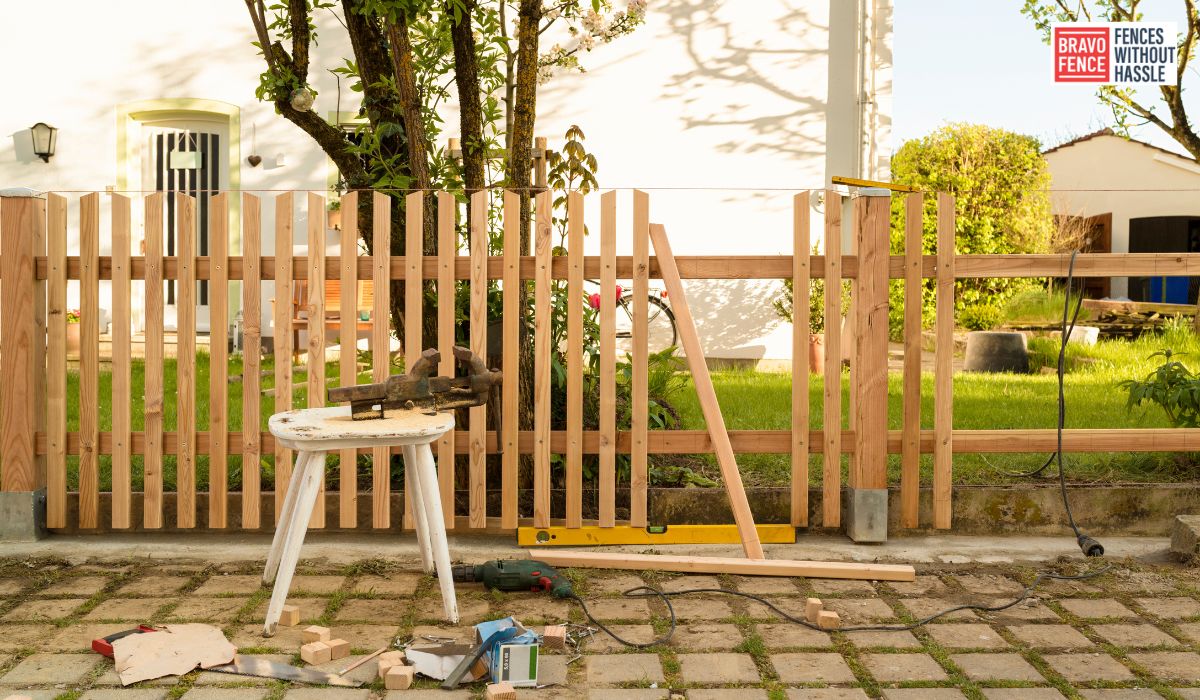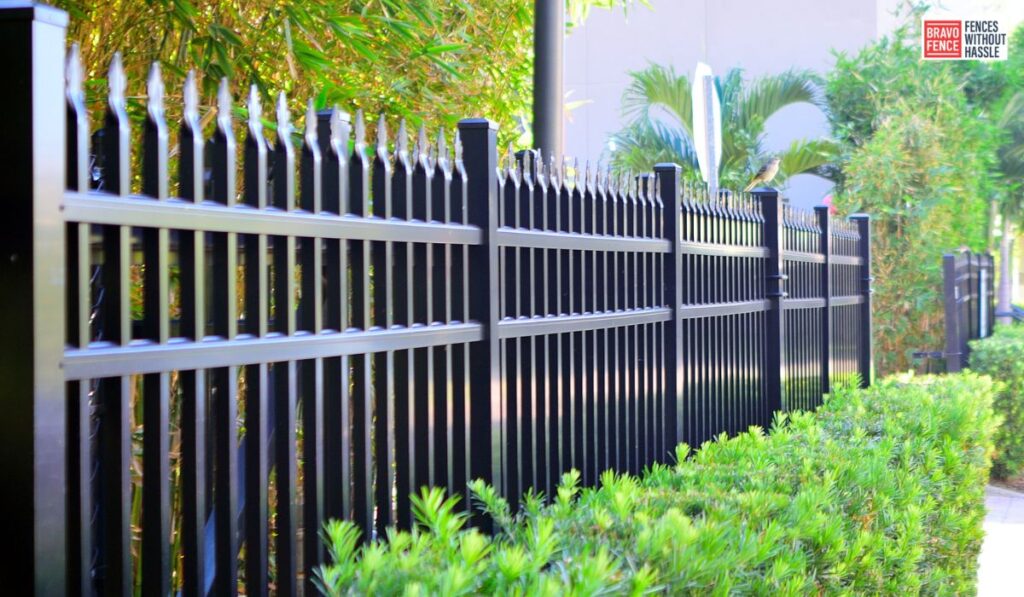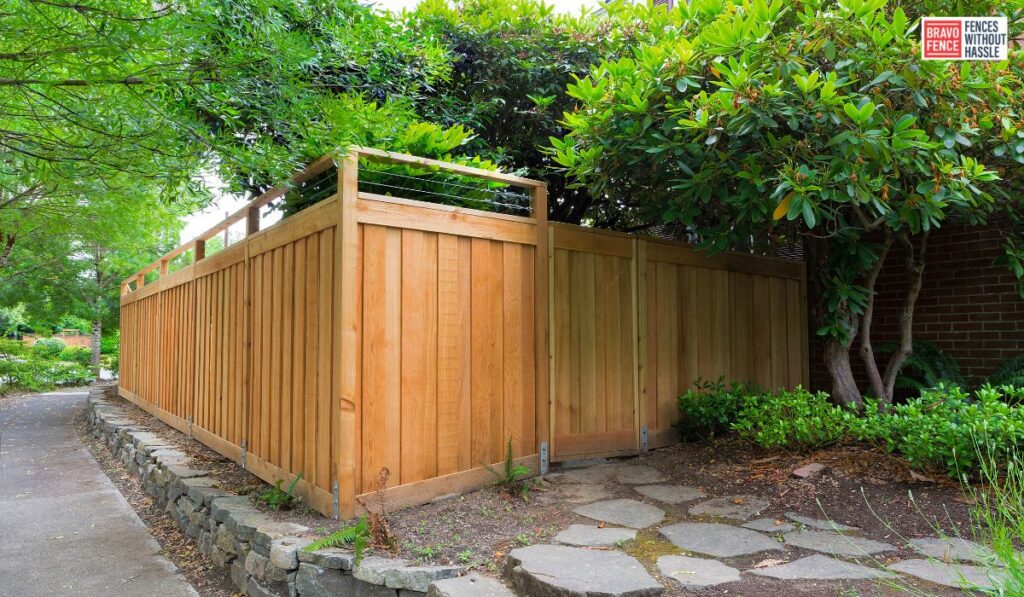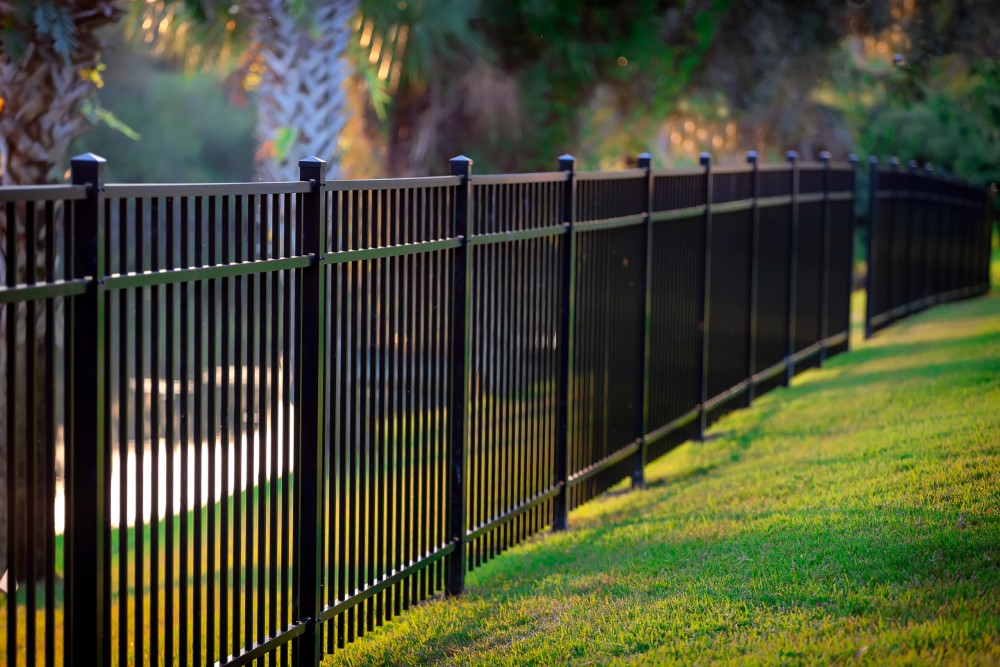
Best Fence Repair Services | Fix, Stain, Replace & More
When it comes to fence repair, finding the best service provider is crucial. A reliable and skilled team can efficiently fix your fence, ensuring its durability and aesthetics. Whether you have a wooden, metal, or vinyl fence, choosing the right professionals can make all the difference in restoring its functionality and appearance.
Signs That You Need Fence Repair Or Replacement
Identifying the signs of fence damage is essential to determine whether repair or replacement of Fence Panel is necessary. Common indicators include leaning or sagging posts, broken or missing boards, rusted metal components, and extensive rotting.
Additionally, severe weather conditions, such as storms or heavy winds, can cause significant damage to your fence. Being attentive to these signs allows you to take prompt action and avoid further deterioration.
Hire A Fence Repair Company Or DIY?
Deciding whether to hire a professional fence repair company or tackle the project yourself depends on various factors. While DIY repairs can be cost-effective, they require time, skill, and proper tools. For complex repairs or large-scale projects, it’s often more efficient and safer to hire experts. Professional fence repair companies have the expertise, experience, and equipment to handle any type of repair or replacement job, ensuring high-quality results.
How To Repair Your Fence?
Repairing a damaged fence involves several steps that guarantee a sturdy and visually appealing outcome. By following these guidelines, you can effectively restore your fence’s functionality and extend its lifespan.
Assessing the Damage
Begin by thoroughly inspecting your fence to assess the extent of the damage. Identify broken boards, loose nails, rotted sections, or any other issues that need attention.
Gathering Supplies
Once you’ve assessed the damage, gather the necessary supplies, including replacement boards, nails or screws, brackets, and paint or stain to match the existing color of your fence.
Preparing the Area
Before starting the repair, clear the area around your fence, removing any plants, debris, or obstacles that might hinder the process. This ensures a safe and accessible work environment.
Repairing Broken or Damaged Boards or Posts
Using appropriate tools, remove broken boards or posts carefully. Replace them with new ones, ensuring they are securely attached. For damaged boards, reinforce them with additional screws or nails.
Steps To Replace A Fence

If your fence requires complete replacement, follow these steps:
Calculating Materials Needed
Measure the length and height of the fence to determine the amount of materials needed. This includes posts, panels, and any additional components.
Removing Old Fencing Material
Carefully dismantle the existing fence, removing old posts and panels. Dispose of the materials responsibly or recycle them if possible.
Setting New Posts and Installing New Panels
Using proper measurements and leveling techniques, install new fence posts securely into the ground. Attach the panels, ensuring they align evenly and are structurally sound.
Securing Gate Hardware, Lattice, and Other Accessories
For fences with gates, attach the necessary hardware, such as hinges and latches. Install lattice or other decorative elements according to your design preferences.
Fence Repair And Maintenance Tips
To maintain the longevity and appeal of your fence, consider the following tips:
- Regularly inspect your fence for signs of damage and address issues promptly.
- Clean your fence periodically to remove dirt, debris, and mold.
- Apply a protective coating, such as stain or paint, to prevent rot and enhance durability.
- Trim vegetation around your fence to prevent overgrowth and minimize potential damage.
- Avoid leaning heavy objects against the fence or using it as a support for structures.
Contact Us Today For Fence Repair, Replacement & More!
If you require professional fence repair or replacement services, don’t hesitate to contact our team. We have the expertise, resources, and commitment to providing top-notch fence repair solutions. Whether you have a small backyard fence or a large perimeter fence for commercial purposes, our experienced technicians are equipped to handle any project.
FAQ
How do you repair an outdoor fence?
To repair an outdoor fence, follow these steps:
- Assess the damage: Inspect the fence for any broken boards, loose nails, or structural issues.
- Gather the necessary tools: Prepare a toolkit with items such as a hammer, nails, screws, a drill, and replacement materials.
- Replace broken boards: Remove damaged boards and replace them with new ones, securing them tightly in place.
- Fix loose nails or screws: Hammer in loose nails or tighten screws to ensure the fence is sturdy.
- Address structural issues: If the fence has significant structural problems, consult a professional for proper repair.
How do you fix a fence that has fallen down?
If your fence has fallen down, follow these steps to fix it:
- Remove debris: Clear any debris or obstacles around the fallen fence.
- Assess the damage: Examine the fence to determine the extent of the damage and identify any broken or damaged components.
- Repair or replace posts: If the fence posts are intact, reattach the fence panels securely. If the posts are damaged, replace them before reattaching the panels.
- Secure the fence: Use appropriate fasteners, such as nails or screws, to ensure the fence is securely in place.
- Check for stability: Confirm that the repaired fence is stable and properly aligned.
How do you fix a rotted wood fence?
To fix a rotted wood fence, follow these steps:
- Assess the rot: Determine the extent of the rot in the affected wood sections. Identify if it’s surface-level or if it has compromised the structural integrity.
- Remove rotted sections: Cut out the rotted portions using a saw or chisel, ensuring you remove all the affected Components of wood fence.
- Treat the remaining wood: Apply a wood hardener or preservative to the remaining wood to strengthen it and prevent further rot.
- Fill gaps with wood filler: Fill any gaps or holes with a wood filler that matches the color and texture of the original wood.
- Sand and paint/stain: Sand the repaired areas to smooth them out, then paint or stain the fence to provide protection and maintain a uniform appearance.
How do you reinforce a wooden fence?
To reinforce a wooden fence and improve its stability:
- Check for weak areas: Inspect the fence for weak spots, such as wobbly posts or loose boards.
- Reinforce posts: Dig around the fence posts and add concrete to create a sturdier foundation. Secure the posts with braces or brackets.
- Replace damaged boards: Replace any cracked or rotted boards with new ones to ensure the fence’s overall strength.
- Add cross braces: Install horizontal cross braces between fence posts to distribute the load evenly and prevent sagging.
- Tighten fasteners: Check and tighten all screws, nails, and bolts to ensure a secure connection between components.

Can a blown-down fence be repaired?
Yes, a blown-down fence can often be repaired. However, the extent of the damage will determine the repair process. Assess the damage and determine if it requires simple fixes like reattaching panels or if more extensive repairs or replacements are necessary. In some cases, it may be more cost-effective to replace the fence entirely, especially if the damage is extensive or the fence is old.
Is fence damage covered by insurance?
The coverage for fence damage can vary depending on your insurance policy and the specific circumstances of the damage. In general, standard homeowner’s insurance policies may provide coverage for fence damage caused by certain perils, such as fire, vandalism, or windstorms. However, it’s important to review your policy or consult with your insurance provider to understand the specific terms, conditions, and coverage limits related to fence damage.
Does home insurance cover fence blowing down?
Whether home insurance covers a blown-down fence depends on the cause of the damage and the specific terms of your policy. If the fence was blown down due to a covered peril, such as a windstorm or a falling tree, it may be eligible for coverage under your homeowner’s insurance. However, it’s essential to review your policy documents or contact your insurance provider to determine the extent of coverage and any deductible that may apply.
Can a rotten fence post be repaired?
In some cases, a rotten fence post can be repaired, depending on the severity of the rot. If the rot is limited to the surface or outer layers of the post, it may be possible to reinforce it with a wood hardener or epoxy filler. However, if the rot has significantly compromised the structural integrity of the post, it’s generally recommended to replace it entirely to ensure a sturdy and long-lasting repair.
How can I make my fence panels stronger?
To make your fence panels stronger, consider the following tips:
- Choose quality materials: Opt for high-quality, durable materials when installing or replacing fence panels. Select treated or naturally rot-resistant wood, sturdy metal panels, or durable vinyl materials.
- Proper installation: Ensure that fence panels are installed securely, using appropriate fasteners and techniques. Follow manufacturer guidelines or consult with professionals for proper installation methods.
- Add horizontal supports: Install horizontal support beams or cross braces between fence posts to provide additional stability and prevent sagging or warping over time.
- Regular maintenance: Regularly inspect your fence panels for any signs of damage, such as loose boards or weakened areas. Promptly repair or replace damaged sections to maintain the overall strength of the fence.
How can I make my fence more secure?
To enhance the security of your fence, consider the following measures:
- Height and design: Opt for a taller fence that makes it harder for unauthorized access. Choose a design that minimizes footholds and offers limited visibility into your property.
- Strong materials: Select sturdy materials that are difficult to breach, such as wrought iron, chain link with privacy slats, or solid wood panels.
- Secure gates and entrances: Install robust gate hardware, including sturdy hinges, latches, and locks. Consider adding a keypad or electronic access system for added security.
- Surveillance and lighting: Install security cameras or motion-sensor lights near the fence to deter trespassers and enhance visibility during nighttime.
- Trim vegetation: Regularly trim bushes, trees, and other vegetation near the fence to eliminate hiding spots and prevent easy access.
Is it worth staining an old fence?
Staining an old fence can be worth it for several reasons:
- Enhanced appearance: Staining can revive the look of an old fence, making it appear fresh, vibrant, and well-maintained.
- Protection against the elements: Stain acts as a protective barrier, shielding the wood from UV rays, moisture, rot, and pests, thus extending the fence’s lifespan.
- Prevention of warping and cracking: Staining helps to prevent wood from warping, cracking, or splitting due to exposure to harsh weather conditions.
- Easier maintenance: Stained fences are generally easier to clean and maintain, as the stain helps repel dirt, grime, and mildew.
Consider the condition of your fence and your desired aesthetic outcome when deciding whether to stain an old fence. If the fence is structurally sound and you want to improve its appearance while providing protection against the elements, staining can be a worthwhile investment.
Can you save a rotting fence?
In some cases, it may be possible to save a rotting fence, depending on the extent of the damage. If the rot is localized to a few sections or boards, you can remove the affected areas and replace them with new, healthy materials. However, if the rot has spread extensively throughout the fence or has compromised its structural integrity, it may be more cost-effective and practical to replace the entire fence.
What is the life expectancy of a wooden fence?
The life expectancy of a wooden fence can vary depending on factors such as the type of wood used, maintenance practices, climate conditions, and exposure to elements. On average, a well-maintained wooden fence can last anywhere from 15 to 20 years or more. Regular cleaning, sealing, and staining, along with prompt repairs when necessary, can significantly extend the lifespan of a wooden fence.
Is it better to spray or roll stain on a fence?
The choice between spraying or rolling stain on a fence depends on personal preference and the specific circumstances. Both methods have their advantages:
- Spraying: Spraying stain can be quicker and more efficient, especially for large fence areas. It provides an even application and can reach tight spaces more easily. However, it requires careful preparation to avoid overspray and protect surrounding surfaces.
- Rolling: Rolling stain on a fence offers more control and precision. It ensures thorough coverage and allows for better penetration into the wood. Rolling is also a suitable option for smaller or intricate fence designs. However, it may be more time-consuming compared to spraying, especially for extensive fence projects.
Consider the size of your fence, the level of detail required, and the equipment available to determine which method is best suited for your staining project.
Should you power wash a fence before staining?
Power washing a fence before staining can be beneficial to remove dirt, debris, mold, and old finishes that may hinder proper stain adhesion. It helps create a clean surface and allows the stain to penetrate the wood more effectively. However, it’s essential to use the power washer carefully, keeping an appropriate distance and pressure to avoid damaging the wood. After power washing, allow the fence to dry thoroughly before applying the stain.
When should you not stain a fence?
There are certain situations when staining a fence may not be recommended:
- New wood: If you have recently installed a new fence, it’s advisable to wait for the wood to weather and dry properly before applying stain. This allows the natural oils and moisture content to stabilize, ensuring better absorption and longevity of the stain.
- Wet or damp wood: Staining a fence when the wood is wet or damp can prevent proper adhesion and absorption of the stain. Wait for the fence to dry completely before applying the stain.
- Extreme weather conditions: Avoid staining a fence during periods of extreme heat, direct sunlight, or high humidity. These conditions can interfere with the drying process of the stain and affect its overall effectiveness.
- Unprepared or unfinished surfaces: Ensure that the fence surface is clean, smooth, and free from previous coatings or finishes. Stain should not be applied over paint, varnish, or other incompatible coatings without proper preparation.
Always follow the manufacturer’s instructions and consider the specific recommendations for the stain you are using.
Tags: Complete Guide to How To Repair A Wooden Fence, Complete Guide to How To Repair Fence, Everything You Need to Know About Cedar Fence Repair, Explore Helpful Resources on Fence Repair Services, Explore Helpful Resources on How To Repair A Fence, Explore Helpful Resources on Picket Fence Repair, Explore Helpful Resources on Wood Fence Repair, Inspiration and Tips on Fence Panel Repair, Inspiration and Tips on Fence Panel Repair Slats, Top Ideas and Insights About Repair Wood Fence
